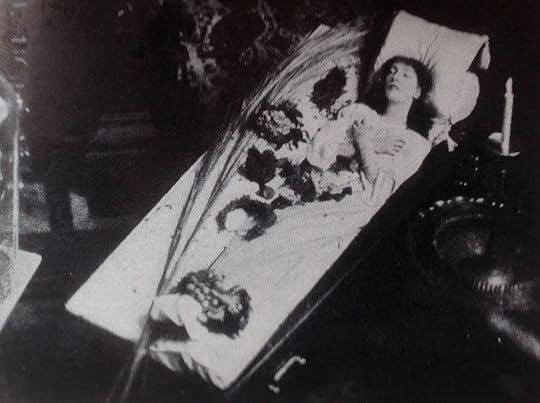What do you think?
Rate this book


352 pages, Paperback
Published December 1, 1994

"Sander, at the same time as those working in physics, psychology, political science, and other disciplines, blundered against and inadvertently helped uncover the principal truth of this century: viewer and viewed are fused into an indivisible whole...
"Planck, Bohr, Heisenberg, and other co-conspirators similarly turned physics back onto itself, bringing a new reflexive element into the limits of the discipline."
"To observe was already to change."
"To look at a thing is already to change it. Conversely, acting must begin with the most reverent looking."
"...To see an object from a distance is already to act on it, to change it, to be changed."
"Memory was a reminder to change something in the future. And photos were more or less recognised memories."
"Every photographic print invites identification with the photographer, forces re-creation of the values implied in preserving the vanished image. Viewing becomes a memento mori, a reminder of the death of the subject matter, landscape or portrait, long since passed away but remade in our owning and involving ourselves with the print."
"Interpretation asks us to involve ourselves in complicity, to open a path between feeling and meaning, between ephemeral subject matter and the obstinate decision to preserve it, between the author of the photograph and ourselves."

"The simple portrait, worshiped for half a century, most of a lifetime, had no real connection to her except as an act of the imagination.
"She did not know the actual boys pictured there, but had, rather, invented, out of her own need, a whole story linking them to herself by means of the pliable image. After years of trying to monopolise the print, she had at last to surrender the question of authenticity not to the photographer nor even to the indiscriminately reproducing machine, but to the tampering darkroom of each viewer’s imagination…
"If the photographer is as powerless as we viewers in giving authenticity to a print, then we viewers are at least as capable as the photographer of investing a print with history and significance…What matters is not the slice of history on the emulsion, but our developing it."
"The photo has not once, not even once told me who my young man would have become. I had to do it all. In here. [In my eye.]…It’s almost like playing."
"The reproduction must be enough like the original to start a string of associations in the viewer, but enough unlike the original to leave the viewer room to flesh out and furnish the frame with belief."
"One context did not replace the other but existed concurrently, like the two views needed to create the illusion of depth in a stereoscope…With two slightly different views of the photo – the essayistic and the imagined – side by side, I needed only the stereoscope itself to bring the image into fleshy three-dimensionality."
"No dog is a thoroughbred. The final mystery of photography is that taker, subject, and viewer, each needed for the end product, circle one another warily, define one another in their own terms…each at work reconstructing each other, even going so far as to postulate a biographer such as myself. And I am certainly no thoroughbred…
"I am every day more convinced that it is the work of the audience, not the author (whose old role each year the machine wears down), to read into the narrative and supply the missing companion piece, the stereo view."
